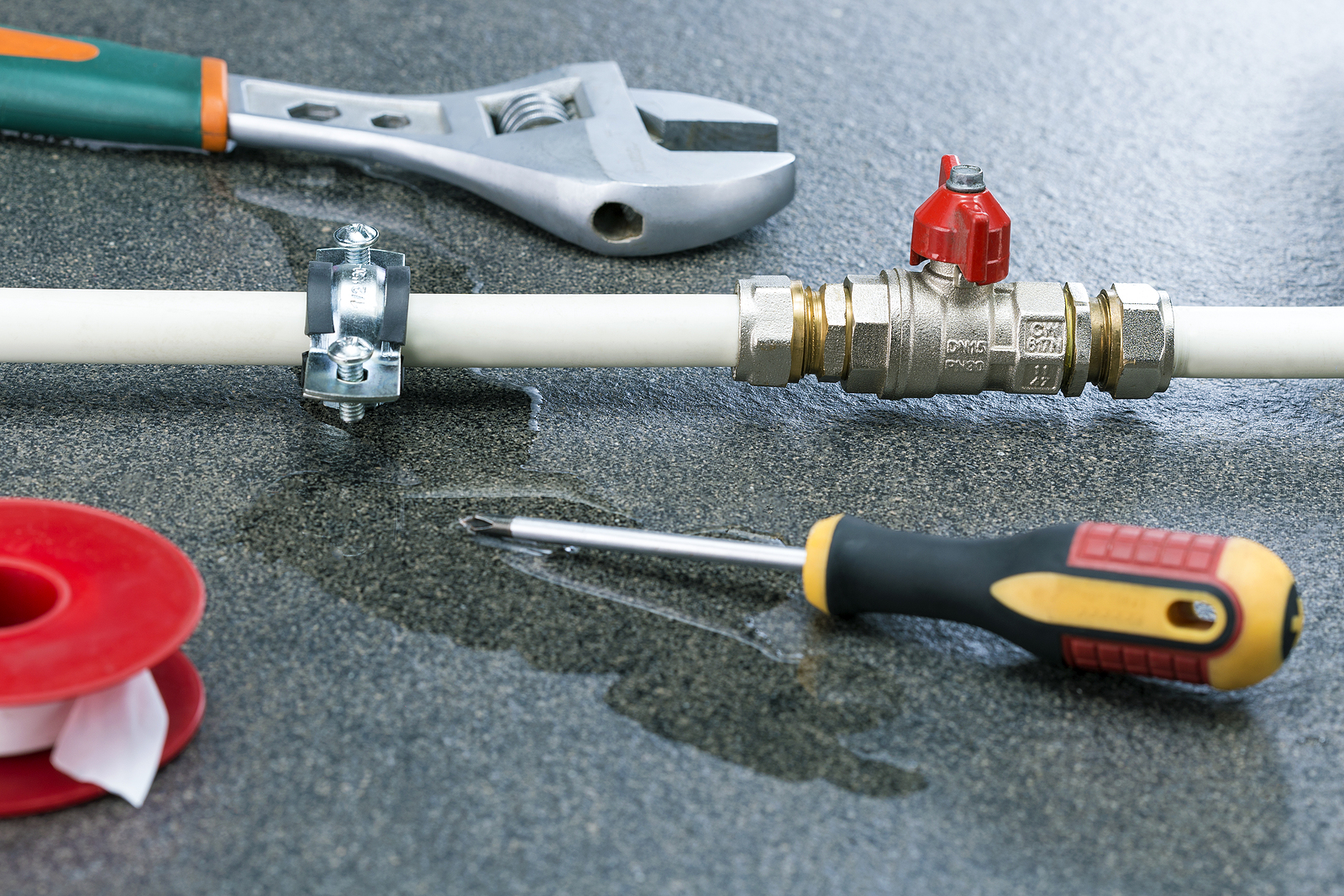The author is making a few good pointers related to Detecting hidden plumbing leaks in general in this great article beneath.

Early detection of leaking water lines can reduce a possible disaster. Besides saving you cash, it will certainly decrease the stress and also disappointment. The minute you find a leak, calling your plumber for repair work is the most effective solution. Nonetheless, some small water leaks may not be visible. Below are some hacks that aid if you can not identify it with your naked eyes.
1. Check Out the Water Meter
Every house has a water meter. Inspecting it is a proven way that assists you discover leaks. For starters, switch off all the water sources. Guarantee nobody will certainly purge, make use of the tap, shower, run the cleaning maker or dishwasher. From there, most likely to the meter and watch if it will certainly transform. Since nobody is using it, there should be no movements. That shows a fast-moving leak if it relocates. If you detect no changes, wait an hour or 2 as well as check back once more. This suggests you may have a slow-moving leakage that can also be underground.
2. Check Water Usage
Analyze your water bills and track your water consumption. As the one paying it, you ought to see if there are any disparities. If you identify sudden changes, regardless of your usage being the same, it means that you have leakages in your plumbing system. Bear in mind, your water costs must drop under the same range on a monthly basis. An unexpected spike in your expense shows a fast-moving leak.
A steady boost every month, even with the very same routines, shows you have a slow-moving leak that's also gradually intensifying. Call a plumber to completely check your residential property, particularly if you feel a cozy area on your flooring with piping underneath.
3. Do a Food Coloring Test
30% comes from bathrooms when it comes to water consumption. Examination to see if they are running correctly. Decline specks of food shade in the container and also wait 10 minutes. If the shade somehow infiltrates your bowl throughout that time without flushing, there's a leakage in between the container and dish.
4. Asses Outside Lines
Do not forget to check your outdoor water lines as well. Needs to water seep out of the connection, you have a loose rubber gasket. One tiny leakage can waste bunches of water as well as spike your water costs.
5. Evaluate and Evaluate the Circumstance
Homeowners should make it a practice to inspect under the sink counters as well as also inside closets for any type of bad odor or mold development. These two red flags indicate a leak so timely focus is called for. Doing regular evaluations, also bi-annually, can conserve you from a major trouble.
Inspect for stainings and also weakening as most appliances and also pipes have a life expectancy. If you presume dripping water lines in your plumbing system, do not wait for it to escalate.
Early detection of leaking water lines can minimize a possible catastrophe. Some tiny water leaks may not be noticeable. Checking it is a guaranteed way that aids you find leakages. One tiny leak can squander tons of water and also spike your water bill.
If you presume dripping water lines in your plumbing system, don't wait for it to intensify.
How to Know If Your Home Has a Hidden Leak
Water Meter Reveals Inexplicable Water Usage
If you’d like to test whether or not there’s a leak somewhere in your home, you can do this using your water meter. Here is how to conduct the test:
Don’t use any water in your home for at least 30 minutes; this also means not turning on faucets or water-using appliances.
Go outside, and check your water meter for activity.
If your water meter shows that there was activity, even though no one was using any water, this proves that there is a leak in your home.
Visible Mold or Mildew Growth
Leaks behind walls create moist, dark environments that allow mold and mildew to grow and thrive. Eventually, you might see mold growth forming on the wall closest to a hidden leak.
If mold is growing in an area that receives a high amount of moisture, such as a bathroom, it may simply be an indication that better ventilation is needed. However, if you see mold growth on a wall or the ceiling in an area where you would not expect, you probably have a hidden leak.
Musty, Mildew Odor
Sometimes you might not be able to see the mold or mildew that is growing as a result of a leak. However, the smell can give the problem away just as easily. If you catch a whiff of something musty, there’s a good chance that old water is collecting somewhere in your home that you can’t see.
Stained/Warped Walls, Ceilings, or Floors
When your home soaks up water, a variety of red flags can become visible, including ceiling stains, bubbling drywall, warped walls, and sagging floors. While these issues can be caused by excess humidity, they can also be signs that a pipe or plumbing connection has started leaking behind your walls.
Inexplicably High Water Bill
After a while, you get a general sense for what your water bill should be. If you own a pool or sprinkler system, your bill will tend to be higher during summer. However, if you receive a water bill that seems especially high, and you can’t figure out what caused it, then you may have a hidden leak somewhere that’s increasing your bill.
https://www.plumbingjoint.com/blog/2019/july/how-to-know-if-your-home-has-a-hidden-leak/

As a serious reader on Finding hidden leaks, I think sharing that piece of content was really helpful. Sharing is nice. Helping others is fun. Thanks for taking the time to read it.
 Kel Mitchell Then & Now!
Kel Mitchell Then & Now! Kirk Cameron Then & Now!
Kirk Cameron Then & Now! Ashley Johnson Then & Now!
Ashley Johnson Then & Now! Pierce Brosnan Then & Now!
Pierce Brosnan Then & Now! Sarah Michelle Gellar Then & Now!
Sarah Michelle Gellar Then & Now!